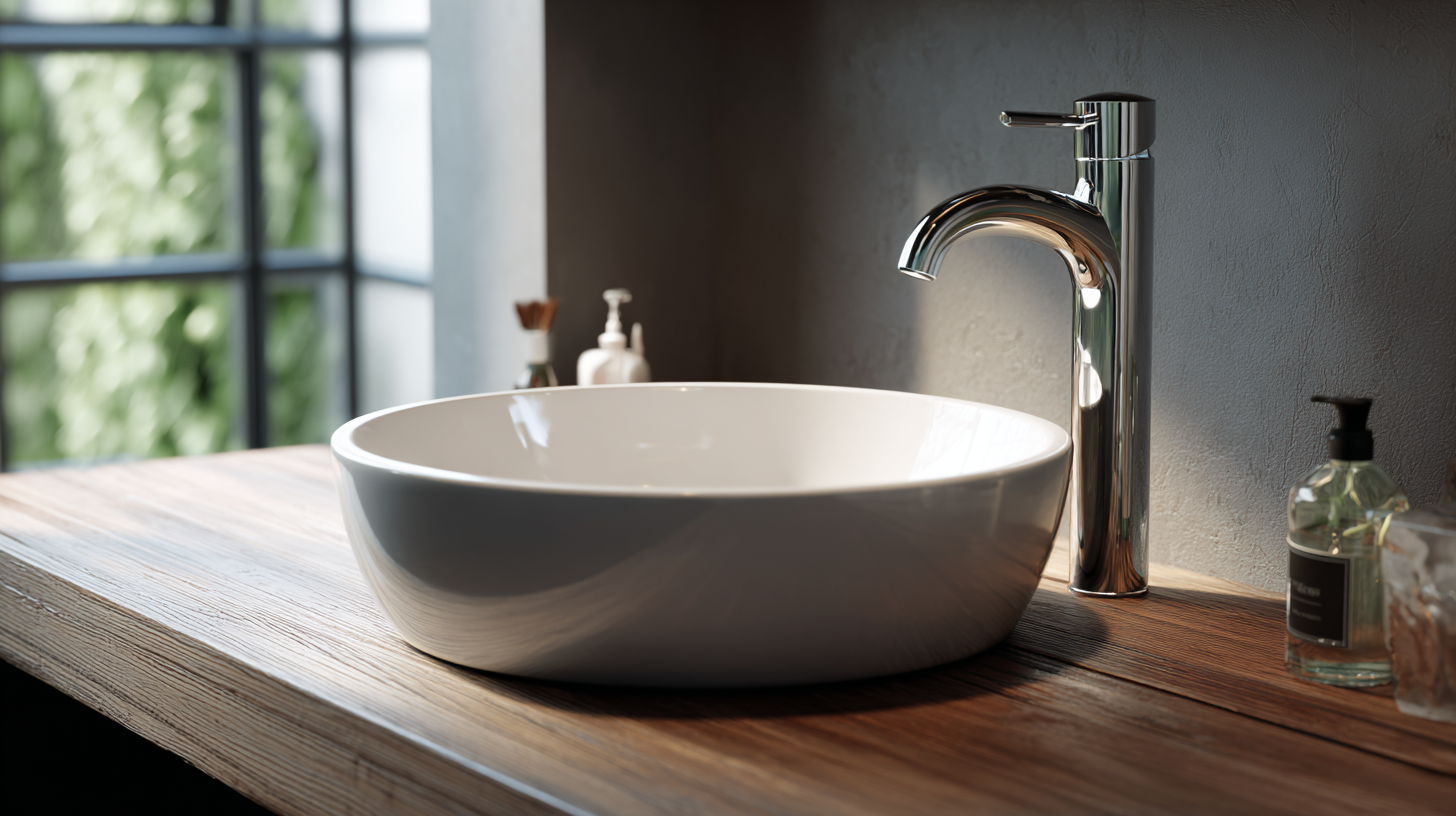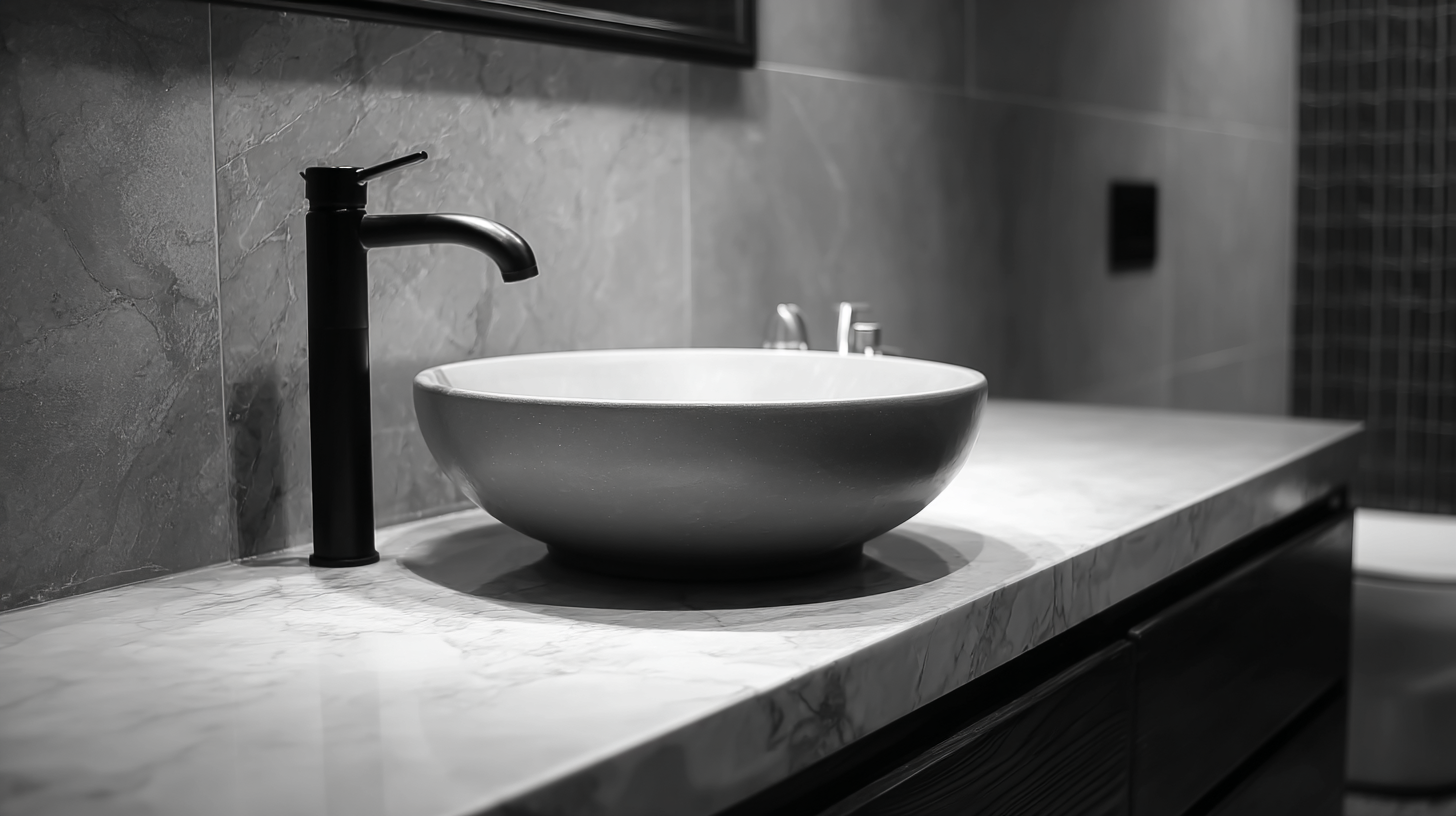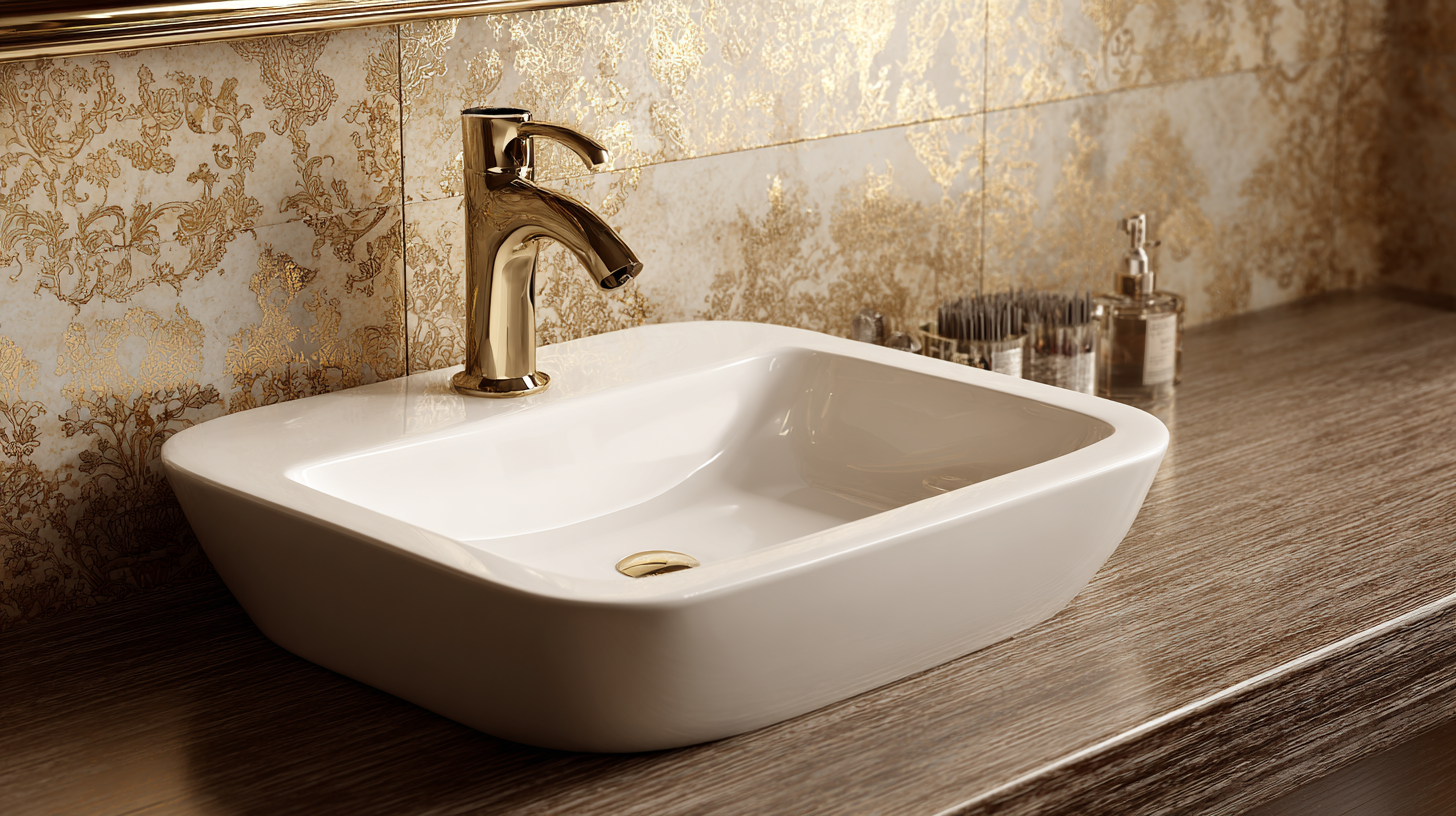Leave Your Message
In recent years, the popularity of countertop basins has surged, driven by their aesthetic appeal and functional versatility. According to a report by the Grand View Research, the global bathroom sink market is projected to reach $11.4 billion by 2025, with countertop basins playing a significant role in this growth due to their unique design and installation flexibility. Homeowners and interior designers alike are increasingly drawn to these stylish fixtures, which offer an array of materials, shapes, and sizes that can complement any bathroom decor. However, choosing the right countertop basin goes beyond mere aesthetics; understanding its unique features and ideal applications is crucial for maximizing both style and functionality. This blog will explore the various types of countertop basins available, providing insights into their specific attributes and how to select the best option for your space.

Countertop basins have gained popularity in modern bathroom design, primarily due to their aesthetic appeal and the unique functionalities they offer. Unlike traditional sinks that are typically installed within a vanity or cabinetry, countertop basins sit atop the surface, creating a striking visual element. This elevated positioning allows for more creative design possibilities, enabling homeowners to select from various materials, shapes, and sizes, thereby enhancing the overall decor.
One of the standout features of countertop basins is their ease of installation and maintenance. They often require fewer plumbing modifications, making them a suitable choice for renovation projects. This flexibility also allows users to replace or upgrade their basins without needing to overhaul existing cabinetry. Furthermore, the open access around these basins makes cleaning much simpler compared to traditional sink designs, which can gather grime in hard-to-reach areas. As a result, countertop basins not only contribute to a stylish bathroom but also provide practical advantages that resonate with the needs of modern homeowners.
| Feature | Description | Ideal Application |
|---|---|---|
| Aesthetic Appeal | Countertop basins are designed to be visually striking, often serving as a focal point in modern bathrooms. | Luxury bathrooms, spas, and boutique hotels. |
| Versatility | Available in various shapes, sizes, and materials to fit diverse design themes. | Residential homes, commercial spaces, and creative installations. |
| Easy Installation | Most countertop basins can be easily installed on top of existing countertops without extensive remodeling. | Quick renovation projects and DIY applications. |
| Space Efficiency | Designed to maximize space, often suitable for smaller bathrooms. | Small apartments, compact bathrooms, and powder rooms. |
| Customizable Options | Can be customized in terms of color, finish, and accessories to match specific tastes. | Custom home designs and projects requiring unique features. |
When it comes to countertop basins, the choice of materials plays a pivotal role in both aesthetics and functionality. Common materials include ceramic, glass, and stone, each bringing distinct characteristics to the design.
Ceramic basins are praised for their durability and ease of cleaning, making them a popular choice for both residential and commercial applications. Their smooth, glossy finish not only enhances their visual appeal but also aligns well with various interior design styles.
On the other hand, glass basins offer a modern, sleek option that can elevate the look of any bathroom or kitchen. Their transparent nature allows for innovative design flexibility, such as integrating lighting features for a dramatic effect. However, glass requires careful handling and regular maintenance to prevent scratches.
Additionally, natural stone basins, such as granite or marble, provide a luxurious touch with unique veining and colors, but they do demand proper sealing and care to maintain their beauty over time. Thus, selecting the right material is crucial for achieving both the desired aesthetic and ensuring the basin's longevity in its application.
 When selecting a countertop basin, the shape and size significantly influence both functionality and aesthetic appeal. Round basins offer a soft, classic look, making them perfect for traditional and cozy bathroom designs. Their symmetrical shape allows for versatility in placement and pair well with various faucet styles. On the other hand, rectangular basins are ideal for modern spaces, providing clean lines and a sleek finish. These basins often offer more surface area, making them practical for larger countertops or for those who appreciate a minimalist approach.
When selecting a countertop basin, the shape and size significantly influence both functionality and aesthetic appeal. Round basins offer a soft, classic look, making them perfect for traditional and cozy bathroom designs. Their symmetrical shape allows for versatility in placement and pair well with various faucet styles. On the other hand, rectangular basins are ideal for modern spaces, providing clean lines and a sleek finish. These basins often offer more surface area, making them practical for larger countertops or for those who appreciate a minimalist approach.
Another important consideration is the depth of the basin. Shallow basins tend to overflow less but may require more frequent cleaning due to splashes. In contrast, deeper basins can accommodate larger volumes of water and are great for practical uses like washing hands or rinsing items. Lastly, size should be matched to the available counter space; oversized basins can overpower a small vanity, while too-small basins may look out of proportion in spacious settings.
Choosing the right style involves balancing aesthetics with practical considerations to create a cohesive and functional bathroom space.
When investing in a countertop basin, it's essential not only to appreciate its aesthetic appeal but also to understand how to maintain it for longevity. One of the crucial aspects of caring for your countertop basin is regular cleaning. Use a non-abrasive cleaner and a soft cloth to gently wipe down the surface, avoiding harsh chemicals that can damage the material. For basins made of natural stone, it’s advisable to apply a suitable sealant periodically to prevent stains and preserve the finish.
Additionally, be mindful of the water temperature you use. Extreme hot or cold water can cause some materials, especially glass or ceramics, to crack over time. Also, consider the placement of your basin; avoid areas prone to heavy use or direct exposure to sunlight, which can fade colors and weaken structural integrity. Finally, addressing minor repairs promptly, such as chips or scratches, can prolong the life of your countertop basin, ensuring that it remains both functional and beautiful for years to come.
Countertop basins have become increasingly popular in both modern bathrooms and kitchens, thanks to their versatile design and practical functionality. According to a recent market research report by Grand View Research, the global bathroom sink market size was valued at USD 15.56 billion in 2022, with countertop basins expected to dominate this growth. Their ability to blend seamlessly with various countertop materials—from granite to quartz—makes them an ideal choice for homeowners looking to enhance their space.

In bathrooms, countertop basins provide an elevated aesthetic while offering ample space for daily tasks. These basins, available in a multitude of shapes and sizes, can complement any design style, from minimalist to bohemian. Kitchens also benefit from countertop basins that enhance workflow and accessibility. A deep basin can accommodate large pots for washing, while a shallow basin can be perfect for quick rinsing tasks, catering to diverse cooking styles.
Tip: When selecting a countertop basin, consider the overall height of your countertop. A standard height is typically around 36 inches, but choosing a basin that fits well with your personal comfort can make everyday tasks much easier.
Tip: Opt for materials that balance durability and style. For example, ceramic and stone composites are both trendy and resistant to daily wear and tear, making them excellent choices for high-traffic areas.
